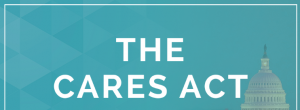 I’ve publicized here and on other platforms that my firm and some affiliates will prepare and submit economic relief applications under the CARES Act without charge. But submitting the application is the easy part. Doing the required underlying accounting and assembling the documentation to support these loan and grants applications is potentially expensive. Of course, a disaster relief loan should be considered only after having developed a solid business recovery strategic plan in the first place. None of this discussion in this post considers the potentially high cost of that type of business financial planning.
I’ve publicized here and on other platforms that my firm and some affiliates will prepare and submit economic relief applications under the CARES Act without charge. But submitting the application is the easy part. Doing the required underlying accounting and assembling the documentation to support these loan and grants applications is potentially expensive. Of course, a disaster relief loan should be considered only after having developed a solid business recovery strategic plan in the first place. None of this discussion in this post considers the potentially high cost of that type of business financial planning.
When borrowing or financing a business in any setting, remember that it is always important to consider the cost of acquiring those funds compared to the benefits, including comparisons to alternate forms of raising necessary capital. That holds true even now in this crisis with the government waiving ‘free money’ that may be more expensive than it first appears.
For the Paycheck Protection Program, I expect the average accounting cost from submission to approval to be about $1,000. The cost would likely be more for businesses with weak business accounting records and will likely be less for businesses where I already prepared their payroll records and financial statements. This cost does not necessarily include the later verification of eligibility to have the loan converted to a grant. Document requirements vary from lender to lender, but this one is typical:
- Payroll Documents for 12-Month Period ending December 31, 2019
- 2019 IRS Quarterly 940, 941 or 944 payroll tax reports
- Calendar year 2019 payroll reports
- 1099s for independent contractors
- Group health insurance premiums paid by business owner
- Retirement plan funding by business owner
- Confirmation of Eligible for Profit or Eligible Non-Profit
- $100k is the individual employee maximum salary level in determining your PPP loan amount. Please adjust your total 2019 payroll by the amount over $100k for each applicable employee.
- Receipt of last corporate tax return
- Borrower confirmation if Economic Injury Disaster Relief (EIDL) funds received for COVID-19 Relief (if applicable).
For the Economic Injury Disaster Loan, we do not have enough information to comment but it seems safe to presume that the work will be comparable.
Some small business owners will be able to handle all this on their own. That’s a great option where it fits. Most that speak with me prefer to not do this work themselves and recognize the value of an accountant advocate even when CPA-prepared financial statements are not required.
In all cases, consider that results are not guaranteed. When businesses spend money trying to qualify for government assistance and are unsuccessful, this is known as “the disaster after the disaster” and is unfortunately relatively common outcome in disaster relief efforts. Even so, we encourage businesses to persist if they are clear on their goals and position.

Leave a Reply